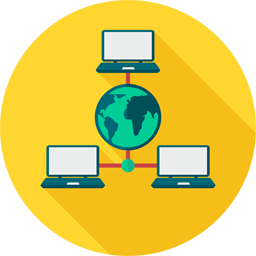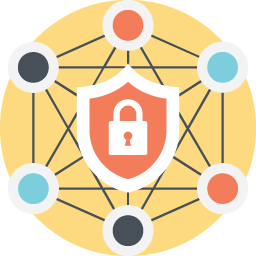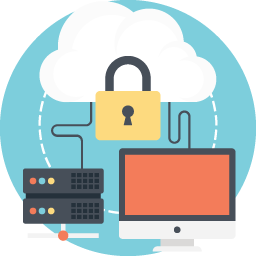Top 10 VPNs For Obscuring Real-Time Activity Patterns Online

These digital behaviours—everything from the times you log in to the content you click on—create a detailed behavioural profile that can be used to infer personal habits, preferences, routines, and even your physical location. While most users are aware of basic privacy concerns such as password protection and avoiding phishing scams, few realise the importance of obscuring real-time activity patterns online.
The constant sharing of real-time data has become a double-edged sword. On the one hand, it allows for personalised experiences, instant communication, and convenience. On the other, it leaves users open to a host of privacy and security risks. Cybercriminals, advertisers, governments, and even data brokers can piece together your actions to form an intricate picture of who you are, what you’re doing, and when you’re doing it. This can lead to identity theft, surveillance, manipulation through targeted ads, or even physical threats in extreme cases.
As digital privacy becomes an increasingly hot-button issue, obscuring your real-time online activity is no longer just for tech-savvy individuals or those with something to hide. It’s becoming a vital part of maintaining autonomy and control in the digital age. Whether you’re a casual user, a business professional, or a privacy advocate, taking steps to mask your online presence in real time can significantly reduce your exposure to unwanted attention.
In this article, we’ll explore what real-time activity patterns online actually are, why you should consider obscuring them, the potential benefits, and the drawbacks involved. Whether you’re looking to improve your cybersecurity or simply protect your everyday digital life, understanding this concept is a valuable step toward reclaiming your privacy in an increasingly connected world.
Our Top VPNs For Obscuring Real-Time Activity Patterns Online
Here is our pick for the very best VPN when it comes to Obscuring Real-Time Activity Patterns Online but of course that is just our opinion and there maybe a VPN that suits your needs more, see our top 10 list below for 10 great VPNs for Obscuring Real-Time Activity Patterns Online.
Make sure you read our in-depth reviews to make sure that the VPN is the right one for you.
ExpressVPN Editor choice
The Top Ten Best VPNs For Obscuring Real-Time Activity Patterns Online
All of the great VPN services listed below are fantastic all around VPNs that are also great when it comes to Obscuring Real-Time Activity Patterns Online.
Make sure you read our in-depth reviews to make sure that the VPN is the right one for you.
Virtual Private Networks For Obscuring Real-Time Activity Patterns Online
What is a Real-Time Activity Patterns Online
Real-time activity patterns online refer to the live or near-instantaneous digital breadcrumbs you leave behind as you interact with the internet. This includes actions such as sending messages, browsing websites, liking social media posts, watching videos, and logging into accounts. These activities create a behavioural timeline that reveals when and how often you engage online, what interests you, where you are geographically, and which devices you’re using.
Unlike historical data, which is collected and analysed retrospectively, real-time activity data is used as it happens. For example, your typing speed on a form, the exact moment you open a webpage, or how long you spend scrolling a feed are all recorded in real time. These patterns are often invisible to the user but are highly valuable to advertisers, app developers, and surveillance entities. Sophisticated algorithms and tracking tools aggregate this information to build predictive models about your behaviour.
Your internet service provider (ISP), websites, apps, and even browser extensions can access some of this data—sometimes legally, sometimes not. Tools such as cookies, device fingerprinting, IP tracking, and GPS logs all play a role in constructing these real-time profiles.
Importantly, real-time data doesn’t always require personal identification to be useful. Even anonymised data can be de-anonymised by correlating activity patterns over time. This means your “private” browsing session may not be as private as you think.
In summary, real-time activity patterns online are a comprehensive, moment-by-moment map of your digital existence—making them an essential target for those concerned with privacy and online security.
Why You Need To Obscure Real-Time Activity Patterns Online
Obscuring real-time activity patterns online is essential for safeguarding your digital privacy, personal safety, and cybersecurity. The more predictable your online behaviour becomes, the easier it is for external entities to track, profile, and potentially exploit you.
First, security risks increase dramatically when your online patterns are exposed. Hackers can use real-time data to detect when you’re online and launch targeted attacks, such as phishing emails sent during your active hours. They can also exploit inactivity to breach accounts while you’re offline, especially if two-factor authentication is not in place.
Second, advertisers and data brokers use your real-time activity to serve hyper-targeted ads. While this may seem harmless or even helpful, it can lead to manipulation of your choices, especially during sensitive moments—such as job searches, financial decisions, or mental health crises.
Third, stalkers, abusive individuals, or malicious actors can use real-time patterns to track physical whereabouts through app check-ins, posts, or location-tagged media. This can be especially dangerous for vulnerable individuals or those in high-risk professions.
Fourth, employers and institutions can monitor your activity to infer work habits or productivity. In some cases, this can lead to unfair evaluations or disciplinary actions based on misunderstood or misrepresented data.
Finally, governments and surveillance agencies in some regions actively monitor real-time behaviour for censorship or control. Activists, journalists, or whistleblowers are particularly at risk.
By obscuring your real-time activity patterns, you regain control over your digital identity, reduce exposure to threats, and foster a healthier relationship with the technologies you use daily.
The Benefits of Obscuring Real-Time Activity Patterns Online
Obscuring your real-time activity patterns online can lead to a wide array of tangible privacy, security, and psychological benefits.
1. Enhanced Privacy Protection
When you mask or randomise your online activity, it becomes significantly harder for third parties to build an accurate behavioural profile. This reduces unwanted data collection by corporations, advertisers, and surveillance tools. By controlling what others can see about your digital life, you reinforce your right to privacy.
2. Improved Cybersecurity
Randomising or delaying online actions (like message sending or login times) can make it difficult for hackers to predict your behaviour and exploit vulnerabilities. Tools like VPNs, Tor browsers, and script blockers can further obfuscate your digital presence, making targeted attacks far less likely.
3. Reduced Targeted Advertising
By confusing behavioural trackers, you limit the effectiveness of invasive advertising techniques. This can result in a cleaner, less manipulative online experience. Many users report improved mental well-being after reducing the noise of hyper-targeted ads.
4. Protection Against Real-World Threats
If you obscure your online activity, you prevent people from deducing your physical routines. This is especially important for individuals at risk of stalking or harassment. Posting on delay or removing geolocation data can make a significant difference.
5. Greater Digital Autonomy
Ultimately, obscuring your real-time activity patterns returns control to you—the user. Instead of being passively observed and profiled, you can choose when and how to engage online, aligning your digital life with your values rather than convenience alone.
The Negatives of Obscuring Real-Time Activity Patterns Online
While obscuring real-time activity patterns online has clear benefits, it’s important to understand the downsides and trade-offs associated with it.
1. Reduced Convenience
Obscuring your online behaviour often requires tools and strategies—like VPNs, browser extensions, or scheduled posting—which can slow down your browsing experience or make certain websites less functional. These disruptions may affect how easily you can access content or interact online.
2. Lowered Personalisation
When real-time data is hidden or distorted, services that rely on it (such as recommendation engines, personal assistants, or custom feeds) become less effective. You may receive less relevant suggestions for videos, music, or shopping items, potentially diminishing the user experience.
3. Increased Complexity
Not everyone is tech-savvy, and setting up systems to obscure your real-time behaviour can be complex or confusing. Misconfiguring a privacy tool could provide a false sense of security, leaving you vulnerable despite your efforts.
4. Suspicion from Platforms or Institutions
Some platforms monitor for “suspicious activity” such as VPN use or delayed logins. In some cases, this can trigger security protocols, lockouts, or even bans. Employers or schools monitoring your behaviour may also view your privacy efforts as an attempt to hide non-compliance.
5. Emotional Disconnect
Delaying or anonymising online interaction—such as posting on a time delay—can diminish the spontaneity of social media or instant messaging. For some, this reduces the sense of connectedness and authenticity in their digital interactions.
Ultimately, obscuring real-time activity patterns involves a balance between security and convenience. Being aware of the potential downsides helps users make informed decisions tailored to their own risk tolerance and digital lifestyle.
In an era where every click, scroll, and swipe is recorded, obscuring your real-time activity patterns online is a crucial step in reclaiming your digital privacy. These patterns, while seemingly harmless, reveal intimate details about your routines, interests, and even your location. Left unprotected, this data can be exploited by advertisers, hackers, stalkers, or surveillance systems.
By taking control—through tools, behavioural changes, and awareness—you can protect yourself from unwanted profiling, manipulation, and threats. While there are drawbacks such as reduced convenience and personalisation, the benefits in terms of privacy, safety, and autonomy often outweigh them.
Digital privacy isn’t just a tech issue—it’s a human right. Obscuring your real-time activity isn’t about paranoia; it’s about empowerment. As online monitoring grows ever more sophisticated, the decision to mask your digital footprint becomes not just wise, but necessary.
Take charge of your digital presence—because your data should belong to you, not the world.












